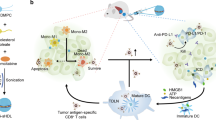Abstract
N-(2-Hydroxypropyl)methacrylamide (HPMA) copolymers containing doxorubicin (DOX) and galactosamine can be targeted to the hepatocyte galactose receptor for organ-specific chemotherapy of primary and metastatic liver cancer. Here we report the dose-dependent pharmacokinetics of this macromolecular conjugate. Following intravenous administration to mice most efficient liver targeting was seen at low dose (0.05 mg DOX kg-1), with receptor saturation observed using higher bolus doses. Repeated low dose bolus injections did not cause down-regulation of the galactose receptor and targeted drug delivery rates of greater than or equal to 2 micrograms DOX g-1 liver h-1 were achieved. DOX is released from such conjugates intracellularly via action of lysosomal proteinases. It was shown that isolated rat liver lysosomal enzymes (Tritosomes) can release unmodified DOX from the peptidyl side chain Gly-Phe-Leu-Gly at a rate greater than or equal to 3 micrograms DOX g-1 liver h-1 i.e. the hydrolytic capacity is greater than the observed rate of drug delivery to the liver lysosomes in vivo. Although most conjugate would be captured by normal hepatocytes following intravenous administration, it was shown that the human hepatoma cell line HepG2 retains the galactose receptor, accumulating and processing the conjugate efficiently. Potential dose limiting toxicities of such drug conjugates could include cardio- or hepatotoxicity. Administration of conjugate reduced the 15 min heart level of DOX approximately 100-fold compared with that observed for an equivalent dose of free drug. Preliminary experiments showed that plasma levels of alkaline phosphatase, alanine transaminase and asparate transaminase did not change following administration of HPMA copolymer-daunorubicin (DNR) (10 mg DNR kg-1) indicating no significant heptatoxicity.
This is a preview of subscription content, access via your institution
Access options
Subscribe to this journal
Receive 24 print issues and online access
$259.00 per year
only $10.79 per issue
Buy this article
- Purchase on Springer Link
- Instant access to full article PDF
Prices may be subject to local taxes which are calculated during checkout
Similar content being viewed by others
Author information
Authors and Affiliations
Rights and permissions
About this article
Cite this article
Seymour, L., Ulbrich, K., Wedge, S. et al. N-(2-Hydroxypropyl)methacrylamide copolymers targeted to the hepatocyte galactose-receptor: pharmacokinetics in DBA2 mice. Br J Cancer 63, 859–866 (1991). https://doi.org/10.1038/bjc.1991.190
Issue Date:
DOI: https://doi.org/10.1038/bjc.1991.190



